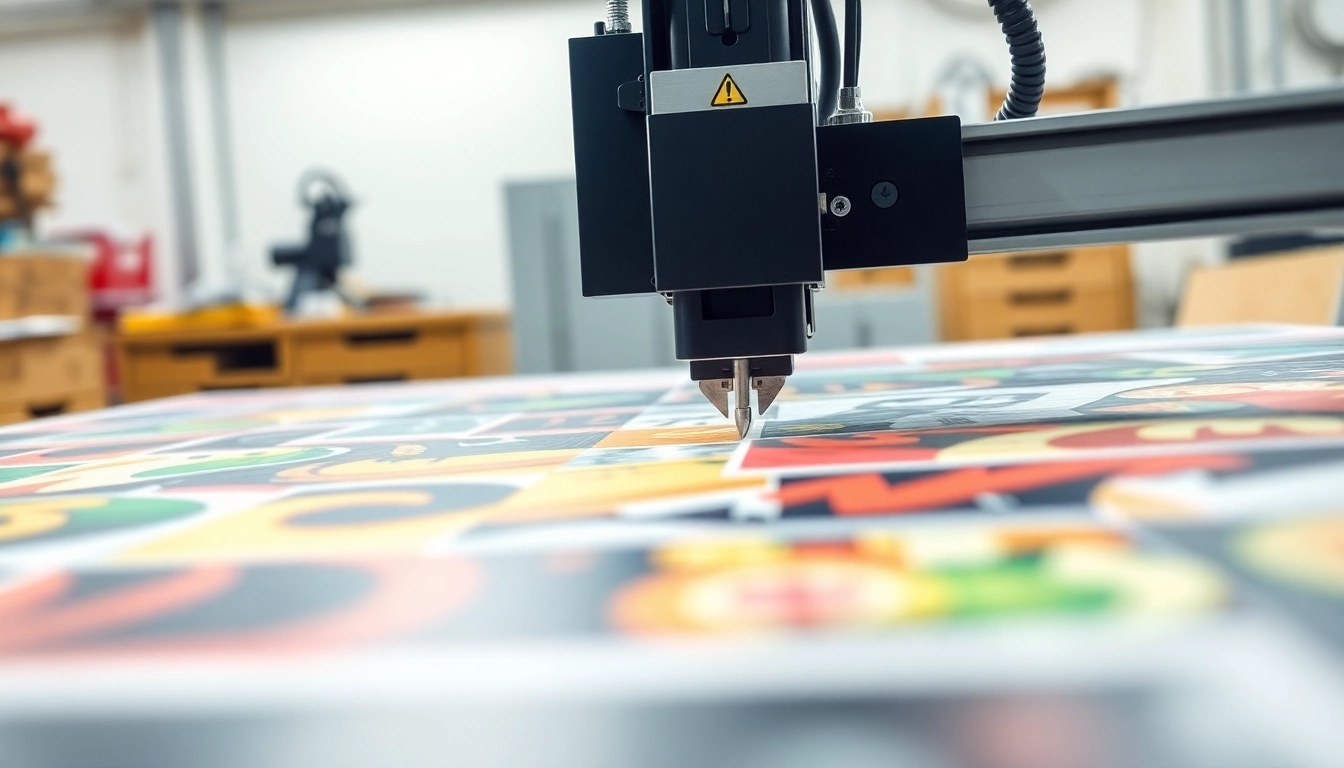Understanding Precision Die Cutting
What is Precision Die Cutting?
Precision die cutting is a manufacturing process used to cut and shape materials into specific forms using steel dies. This method is commonly employed across various industries to produce high-quality and intricate designs. The primary objective is to create parts that meet exact dimensions and tolerances, ensuring superior quality control and repeatability. By employing advanced machinery and technology, precision die cutting maximizes efficiency while minimizing waste, making it a favored choice for manufacturers. For those interested, precision die cutting provides an exceptional means to achieve custom shapes necessary for numerous applications.
The Importance of Precision in Die Cutting
Precision in die cutting directly impacts product quality, performance, and cost-effectiveness. In many cases, the tolerances required can be as tight as ±0.005 inches. This level of precision ensures that parts fit together correctly, work smoothly in assembly lines, and meet performance specifications without requiring extensive rework. The importance of precision is magnified in industries where safety and functionality are paramount, such as automotive and aerospace. Achieving exact cuts can prevent costly errors and improve the overall reliability of the final product.
Applications and Industries Using Precision Die Cutting
Precision die cutting has extensive applications across various sectors, including:
- Automotive: Used for gaskets, seals, and insulation.
- Medical: Production of components for medical devices, including adhesive tapes and silicone parts.
- Electronics: Manufacturing insulators, circuit board components, and housings.
- Packaging: Custom packaging solutions, including boxes and inserts.
- Fashion: Creation of unique designs for garments and accessories.
These applications illustrate precision die cutting’s versatility, catering to a diverse range of industry-specific needs.
Types of Precision Die Cutting Techniques
Flatbed Die Cutting Explained
Flatbed die cutting is a traditional method where a flatbed press pushes a blade through material to cut specific shapes. This method is known for high precision and is ideal for larger pieces or thicker materials. The process involves the use of steel rule dies or engraved dies, making it suitable for low to moderate volume runs. Due to its simplicity, flatbed die cutting can produce complex shapes efficiently, though it may require longer setup times compared to other methods.
Rotary Die Cutting: A Closer Look
Rotary die cutting employs a cylindrical die rotating against a feed of material, achieving continuous cutting. This technique excels in high-speed production, making it ideal for high-volume runs. Rotary die cutting often occurs in-line with printing and other processes, providing a seamless workflow. Its efficiency, combined with the ability to create intricate designs, makes it popular in the packaging and labeling industries.
Laser Die Cutting Technologies
Laser die cutting utilizes a focused laser beam to cut or engrave materials. This method offers the highest level of precision and flexibility, allowing complex geometric shapes and designs to be produced without the need for physical dies. Laser cutting generates less material waste and accommodates various materials, from plastics to metals. Moreover, it is particularly advantageous for prototyping, as it allows for quick adjustments without incurring significant costs.
Choosing the Right Materials for Precision Die Cutting
Common Materials Used in Die Cutting
The choice of material is critical in precision die cutting. Common materials include:
- Papers and cardboards: Widely used for packaging and graphic arts.
- Plastics: Versatile options like PVC, acrylic, and polypropylene utilized for various applications.
- Foams: Often employed for gaskets, seals, and cushioning.
- Metals: Thin metals are used in applications requiring durability, such as components in machinery.
Understanding the properties of each material helps in selecting the most suitable for specific applications.
Material Properties Impacting the Cutting Process
Different materials possess unique properties that affect the die cutting process, such as:
- Thickness: Thicker materials may require more robust cutting tools and machines.
- Density: High-density materials may alter cutting speeds and require adjustments in die specifications.
- Elasticity: Materials that stretch can present challenges in maintaining accuracy, affecting the final product.
It’s essential to evaluate these properties to ensure optimal cutting conditions and results.
Innovative Materials for Advanced Die Cutting Applications
Emerging materials, such as biodegradable plastics or composite materials, are gaining attention due to their sustainability and performance benefits. These advanced materials can enhance product appeal and cater to eco-conscious consumers while providing the durability needed for various applications.
Best Practices for Precision Die Cutting Projects
Design Considerations in Die Cutting
A successful die-cut project begins with thoughtful design. Factors to consider include:
- Tolerance requirements: Understanding specific tolerances required can influence the choice of die cutting method.
- Material selection: Choose appropriate materials based on the end product’s use.
- Complexity of designs: Simplifying intricate designs can reduce costs and improve production speed.
Collaborating with experienced designers can yield higher-quality outputs while minimizing complications.
Minimizing Waste and Maximizing Efficiency
Reducing waste involves careful planning and layout of parts to ensure maximum material utilization. Techniques such as nesting—arranging parts efficiently on the material—can lead to significant material savings. Investing in advanced software solutions that optimize layouts can also enhance efficiency and reduce production costs.
Quality Control in Precision Die Cutting
Quality assurance is vital in precision die cutting projects. Implementing quality control measures ensures that products meet required specifications consistently. This can include:
- Pre-production samples: Creating prototypes before the full production run ensures designs and tolerances are met.
- In-line inspection: Monitoring production processes helps catch issues early and minimizes waste.
- Post-production testing: Quality checks on the final products ensure they meet defined performance criteria.
Emphasizing quality control fosters trust with clients and enhances the reputation of die cutting services.
Cost Factors in Precision Die Cutting Services
Average Cost per Job and Budgeting Tips
The cost of precision die cutting varies based on multiple factors, including material choice, complexity of design, and production volume. Average costs can range from $200 to $500, with prices typically dropping significantly as order quantities increase. To budget effectively:
- Determine precise requirements before requesting quotes.
- Be honest about budget constraints, allowing for more tailored quotes from service providers.
- Consider long-term needs to negotiate better rates for higher volume runs moving forward.
Impact of Design Complexity on Pricing
More complex designs requiring intricate cutting can significantly increase costs due to longer setup times and higher tool wear. Businesses should weigh the benefits of complex designs against potential increases in production costs and delivery timeframes.
Assessing Value: More than Just Pricing
While cost is vital, evaluating value entails assessing quality, service, and overall reliability of the die cutting provider. Factors like lead times, customer support, and the capacity for ongoing support can influence choosing a service provider, ultimately contributing to the overall success of any project.


